The Surface 3 Review
by Brett Howse on May 4, 2015 9:00 AM ESTGPU Performance
The Surface 3 with the Atom x7-Z8700 pairs the Intel Gen 8 Graphics from Broadwell with the Airmont CPU cores of Atom. Unlike the Broadwell cores though, the Surface 3 SoC only has 16 execution units (EUs) as compared to 24 in Core M. The maximum frequency is also reduced to 600 MHz for these cores, as compared to up to 900 MHz in Core M. This is all necessary to keep the x7-8700 in the 2 watt SDP.
So performance will be a step back compared to Core M, but really this should be no surprise. The interesting comparison will be how it compares to Surface Pro 3 with Haswell Gen 7.5 graphics and of course to Bay Trail equipped tablets.
We will start with some synthetic tests and then move on to DOTA 2 to see how it performs on a real world game.
3DMark Tablet
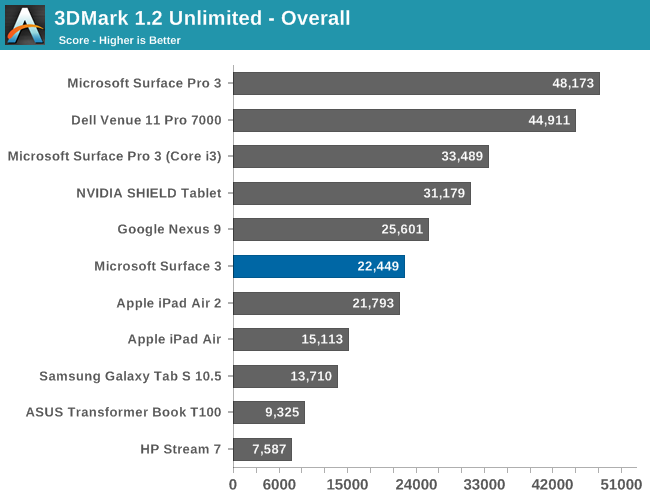


The GPU upgrade is a big improvement over the ASUS T100's Bay Trail graphics, but the Atom GPU still can not compete with the fastest tablet SoCs out there.
3DMark Notebook
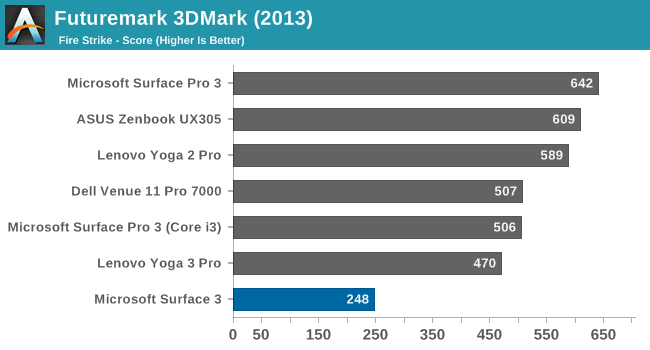
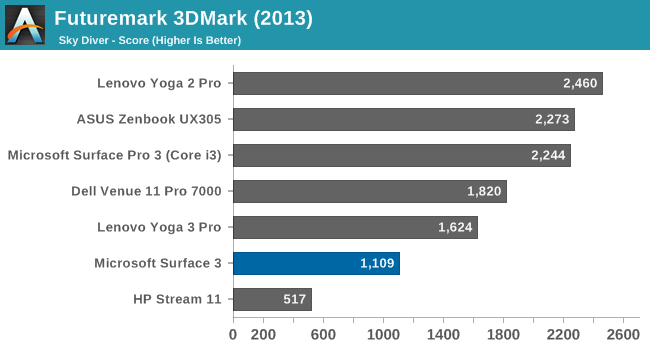
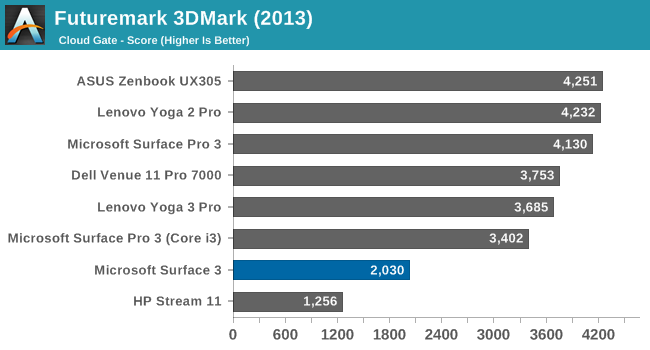

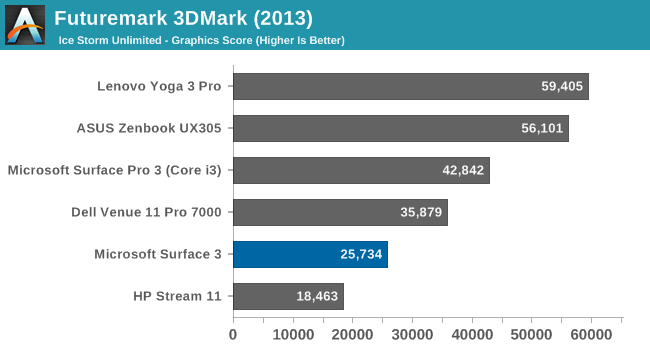
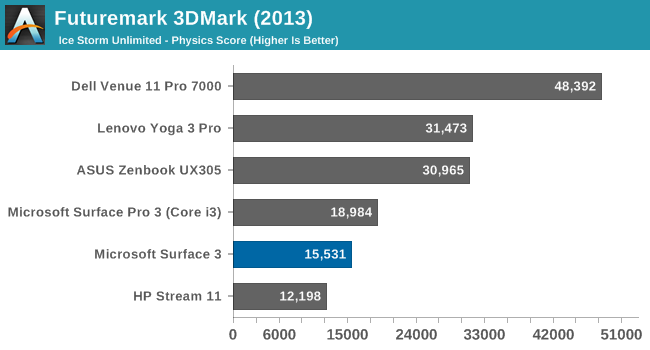
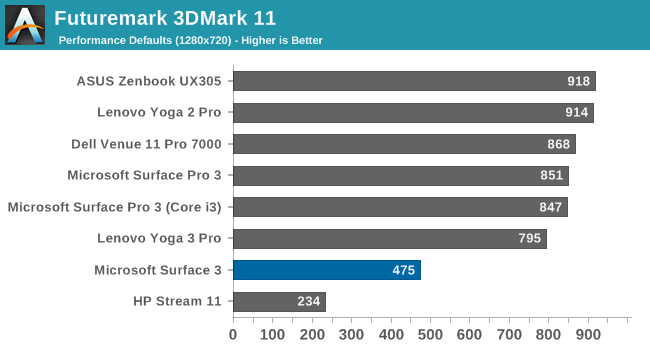
Comparing the Surface 3 to PC class hardware puts it in a pretty poor light when looking at GPU performance. Our 3DMark tests have the Surface Pro 3 with the Core i3 on average 40% faster than Surface 3. Comparing it to the Dell Venue 11 Pro with Core M, we find the Core M GPU is on average 47% faster, which is quite a gap. Let’s not forget though that the Surface 3 is a mere 2 watt SDP, whereas Core M is a 4.5 W TDP and the Haswell-Y in Surface Pro 3 is an 11.5 W TDP.
GFXBench Tablet (OpenGL)
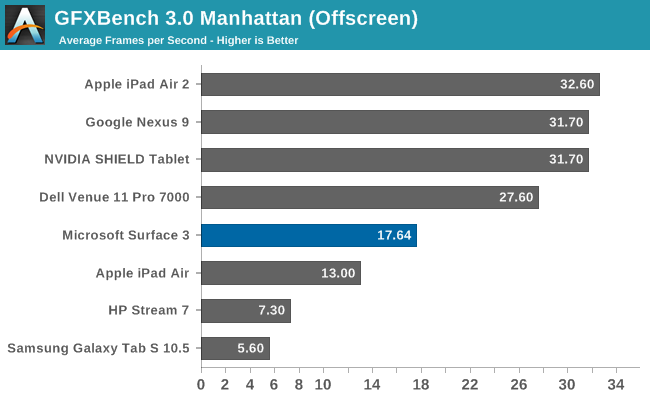
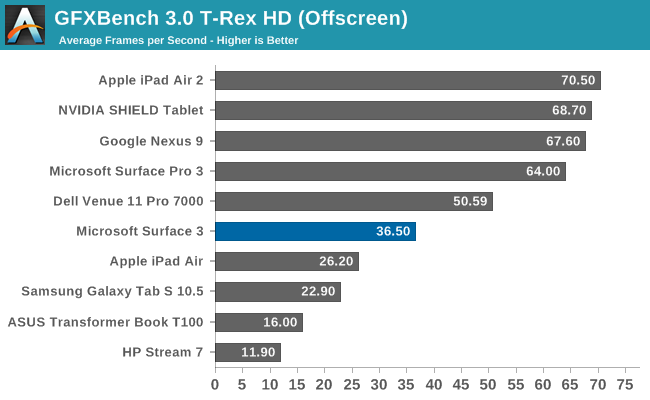
As with the 3DMark scores, the GPU upgrade is significant, but still a ways back of the best tablet GPUs out there. Intel still has some work to do on this front.
GFXBench Notebook (DirectX)
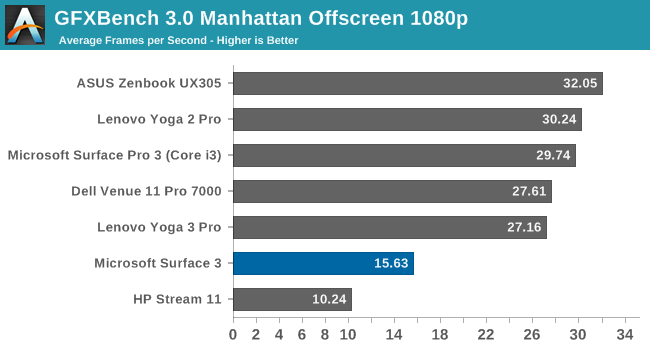
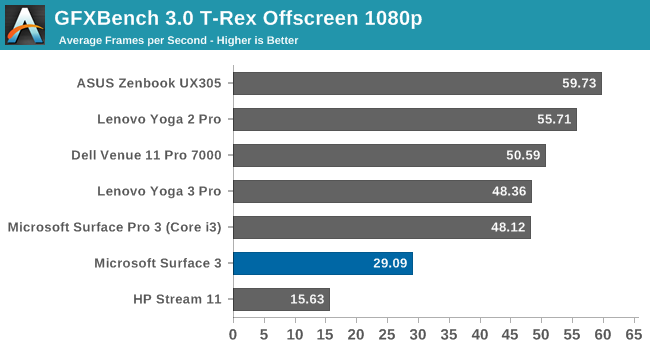
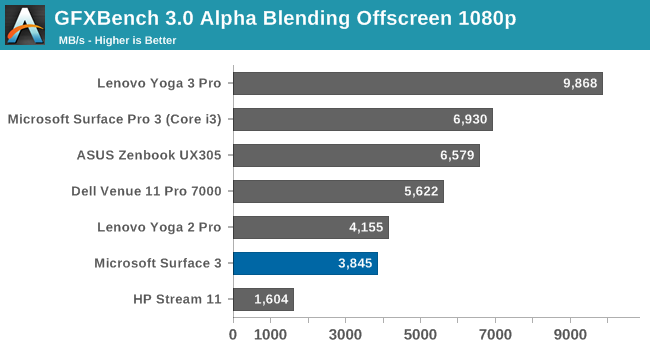

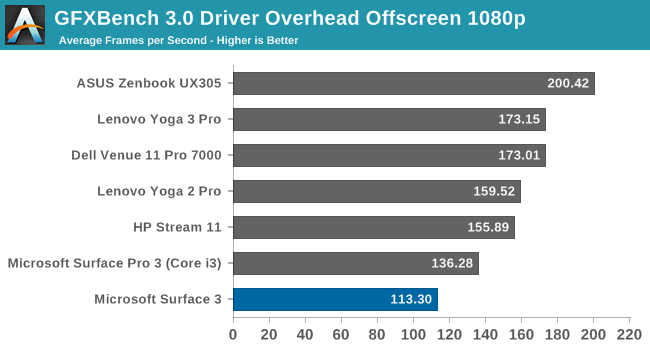
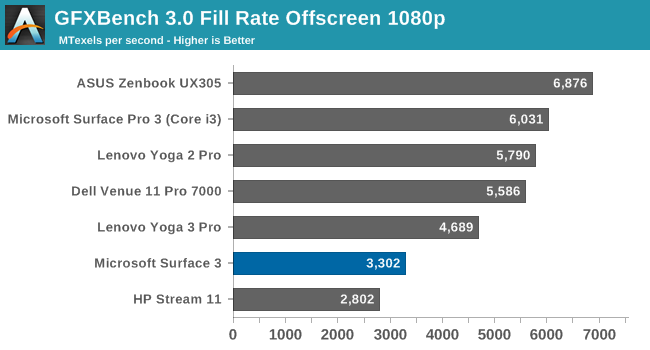

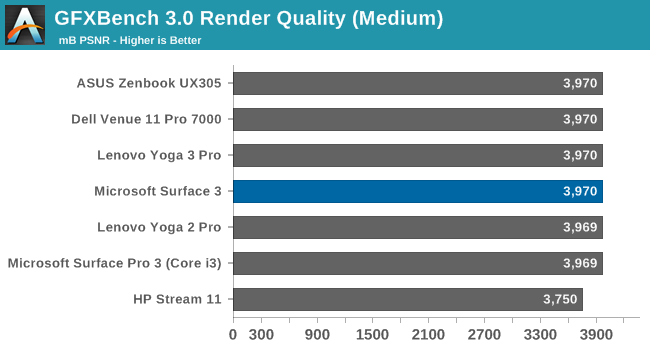
We see a similar story with GFXBench on the notebook side. The 16 EUs in our Atom SoC just cannot compete against the larger and faster GPUs in Core.
Moving on to a real-world game, we use a custom DOTA 2 benchmark for our lower powered devices. It is a very popular battle-arena game, and the GPU requirements are not too demanding.
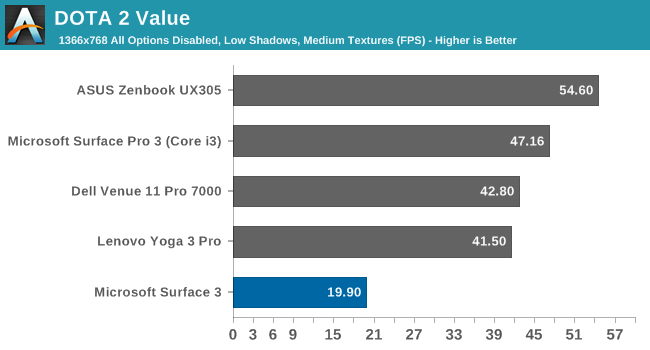
The GPU in the Surface 3 is really not enough to play most games, and even on our value settings, the Surface 3 is not a great experience for DOTA 2. The higher TDP of Core M lets it do ok in this test, but overall the Surface 3 is a long way back of even the Surface Pro 3 Core i3.
Storage Performance
Like most tablets, the Surface 3 utilizes eMMC storage rather than the SSD storage found on higher priced laptops and Core M tablets. It costs less, it is less complex, and it works. So expectations are that it will not be able to compete with the fastest solutions out there. But as a tablet, workloads should be less complex, at least in theory.
Unfortunately Microsoft shipped me the 64 GB version of the tablet, and due to PCMark 8 requiring a large amount of free space in order to perform its tests, it was unable to be run on this device. But we have run into this issue in the past, and we can turn to a couple of other tools to get a feel for how the storage performance is. Even though eMMC is slower than a good SSD, there is still different levels of performance based on the NAND in use and the controller.
I ran CrystalDiskMark over a 4 GB span and the results are below.
Surface 3 eMMC Storage (left) vs Surface Pro 3 Core i3 SSD (right)
Compared to a true SSD, the eMMC performance leaves a lot to be desired. In fact, most of the time when I was using the tablet and I found it slow, such as installing software, or loading programs, it was mostly disk bound. There are faster eMMC options available, but I will refrain from comparing it to other tablets since we do not have the same benchmarking tools for both.


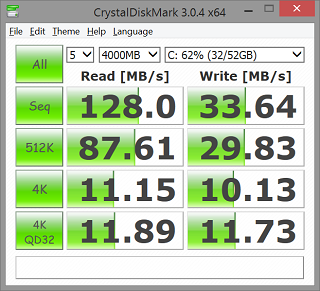
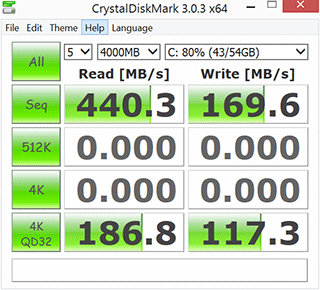








265 Comments
View All Comments
nonoverclock - Monday, May 4, 2015 - link
If you get the chance to update the review with the higher end 4GB version of Surface, I would love to see those numbers. With 2 GB RAM, it seems that we're not seeing the full picture of what the Atom chip is capable of as memory limitations come into play. I have a Bay Trail Dell Venue Pro 11 w/ 2 GB RAM and more intensive web surfing becomes a hassle, likely due to RAM limitations. Would love to see what an Atom + 4 GB RAM is capable of.Shivansps - Monday, May 4, 2015 - link
Also i think the 2GB model is actually running Single Channel ram, crippling 3D results, notebookcheck did a review of the 4GB model and it gets +100 points on 3dmark11.bobjones32 - Monday, May 4, 2015 - link
What browser did you use for your web browsing battery life tests? On my Surface Pro 3, I get 1-2 hours less battery life with Chrome than I do with Firefox with identical extensions installed. On IE without any extensions at all, it's even better.mva5580 - Monday, May 4, 2015 - link
I'd like to know this too; something just doesn't add up with that browsing test.Brett Howse - Monday, May 4, 2015 - link
IE Desktop on notebook battery life, and IE Modern on the tablet one.bobjones32 - Monday, May 4, 2015 - link
Thank you!kmmatney - Monday, May 4, 2015 - link
I have a Winbook tablet (poor man's surface) and after I installed Chrome, IE will not run in modern mode anymore. It will only run in desktop mode, and doesn't even bring up the touch keyboard, which makes it unusable. Chrome works fine in desktop mode, but not IE...Drumsticks - Tuesday, May 5, 2015 - link
The browser you set as default is the only one that can run in modern mode. You would have to change back to IE default to get it in modern.melgross - Monday, May 4, 2015 - link
I'd like to know what it's supposed to mean that sales of the Surface Pro 3 "have been very strong"? Total sales from that, including the keyboards, have been just $732 million last quarter, indicating no more than a total of 700 thousand in the quarter. That's anything but strong, not to mention very strong. I'm not even sure if that's more, or less, than it was last year's quarter, yoy.Perhaps we need a better definition of what strong, and very strong, means when compared to other major tablet vendors.
Drumsticks - Monday, May 4, 2015 - link
Sales were up 40% YoY I believe, and Microsoft went on record some time a quarter or two ago saying that the SP3 had made the division profitable for them.